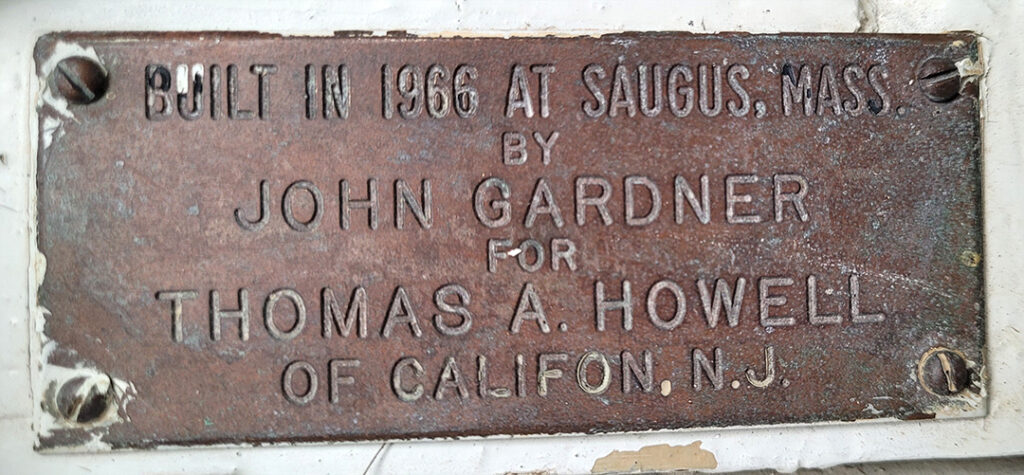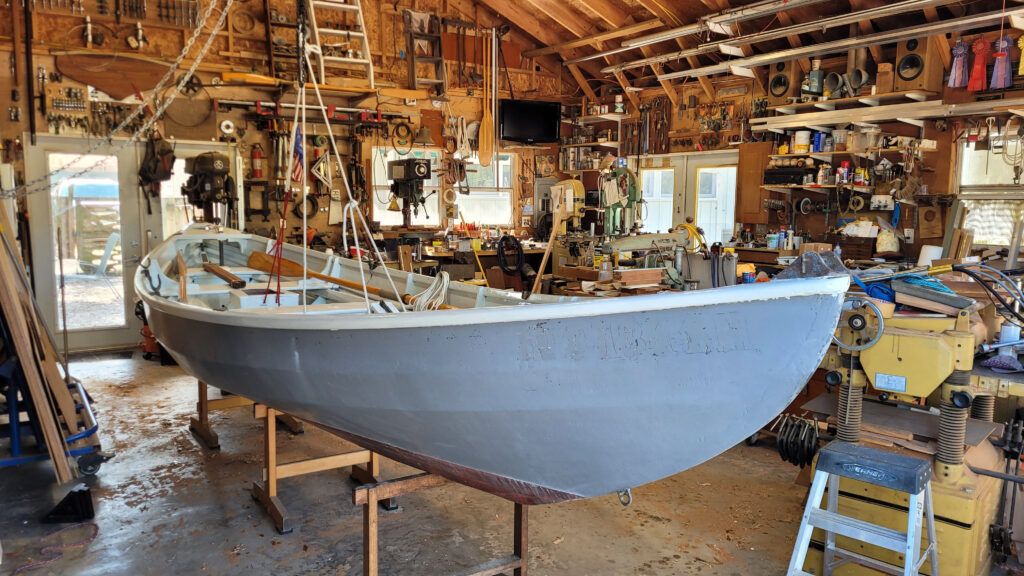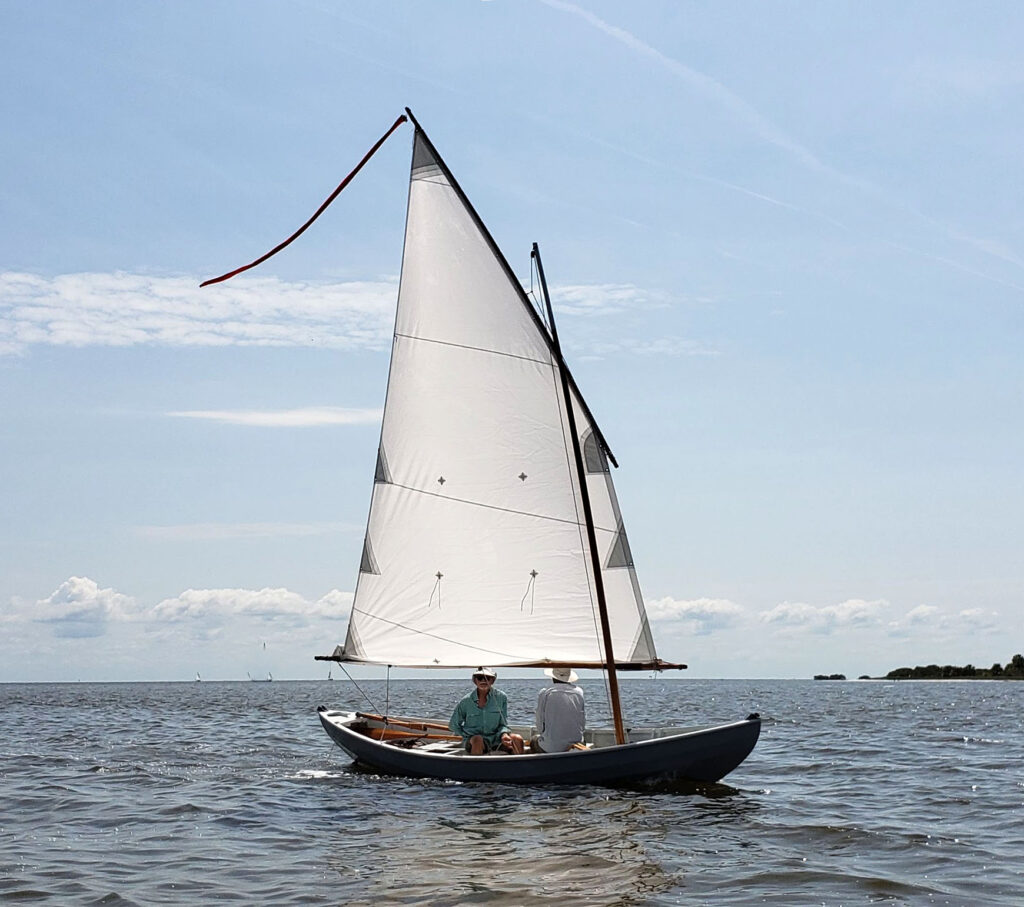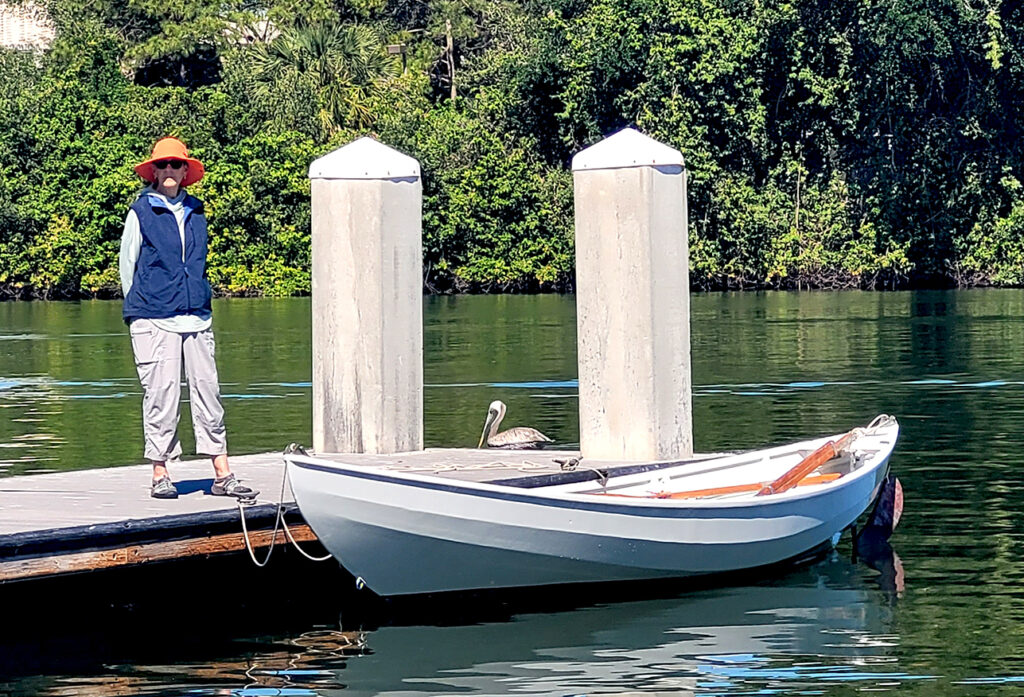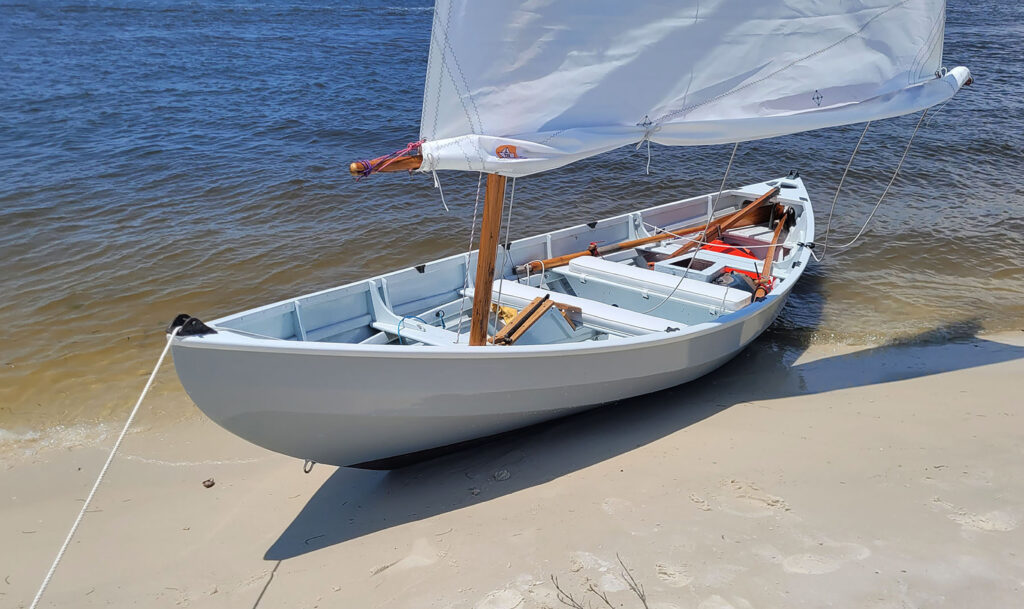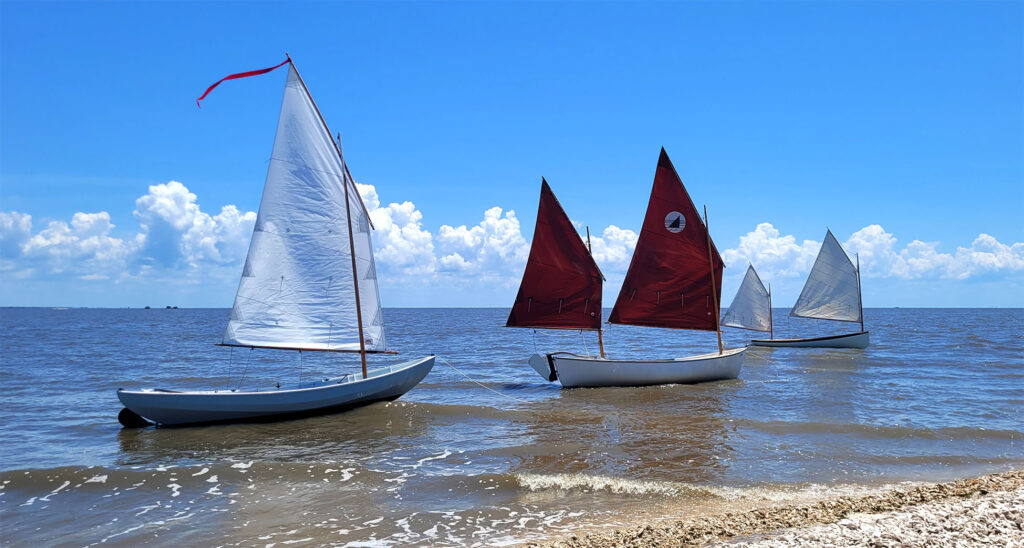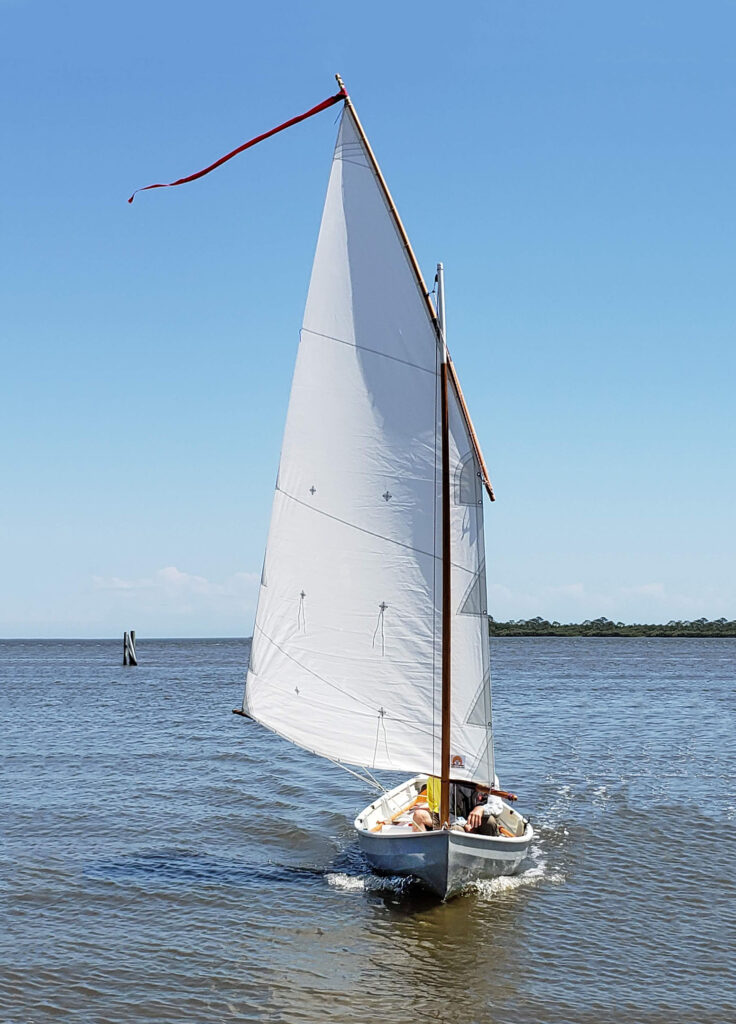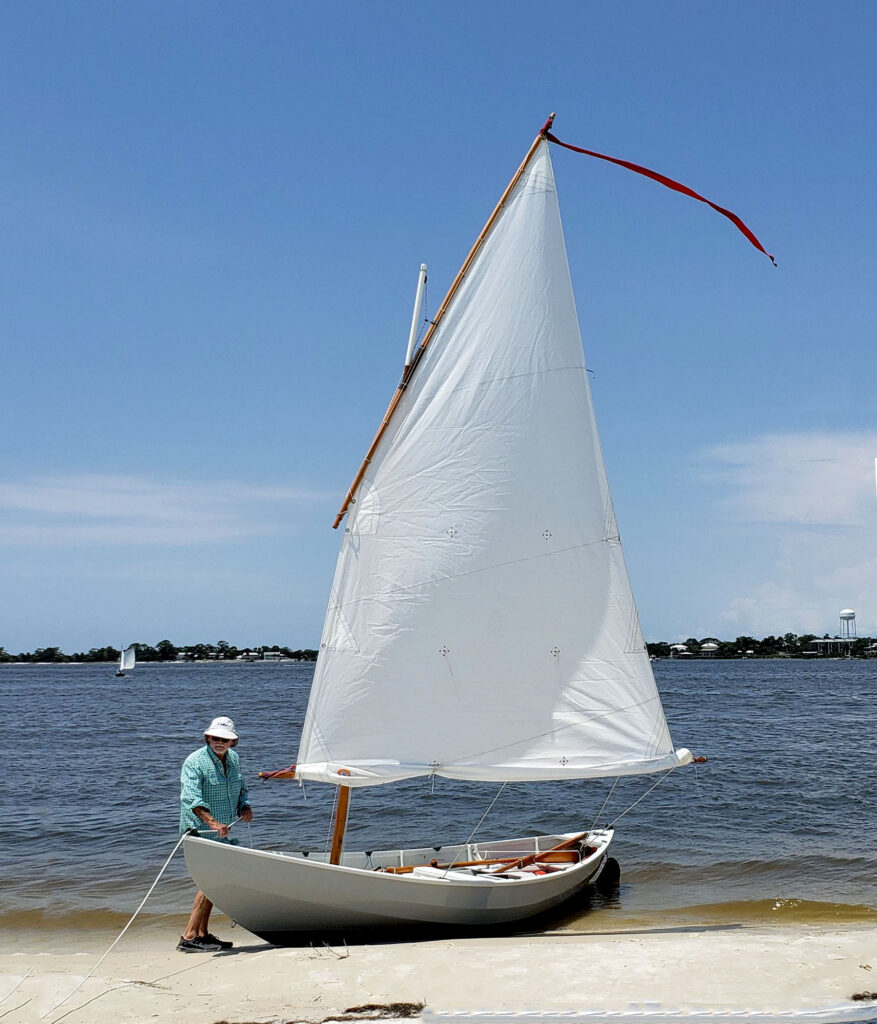Chamberlain Gunning Dory -John Gardner design/built
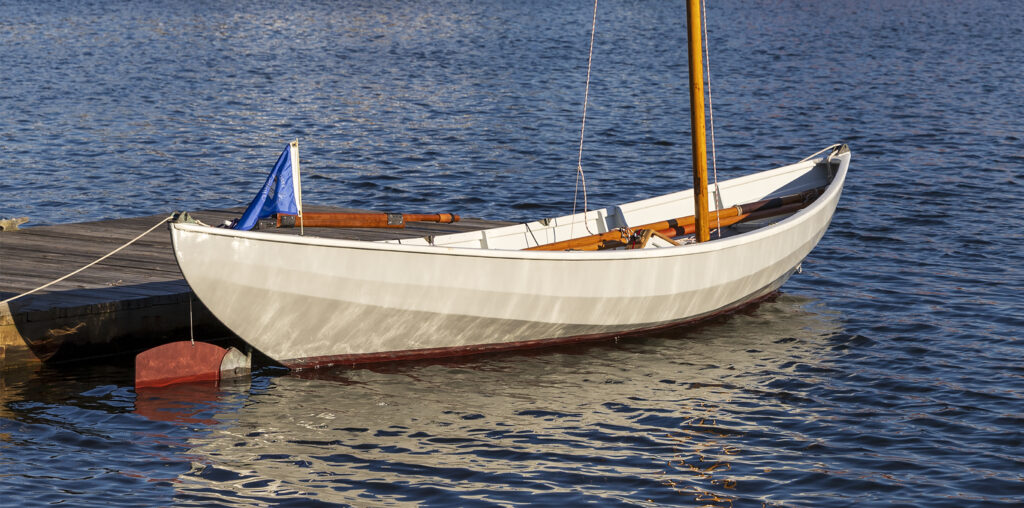
SACRED VESSELS: Chamberlain Gunning Dory
Built in Saugus MA, 1966 By John Gardner
For Thomas A Howell, Califon NJ
I have sentimental attachments to my boats because either I or a friend built them, or just the history and memories attached to them. Others have historical value to me and possibly others. The John Gardner-built Chamberlain Gunning Dory falls into that category.
Through connections within The Traditional Small Craft Association, I received word that there was a dory built by John Gardner, looking for a new home just north of my home on the West Coast of Florida. I can’t say I was very optimistic that I was going to find a 58-year-old wooden boat on the Florida coast that would be in good shape. It is always good to have a trustworthy shipmate when setting off on a new adventure like picking up an old boat on an old trailer of unknown condition. Glenn Osoling and I share more than a half-century of boating experience, and his encyclopedic knowledge of small traditional boats made the perfect companion for the adventure to the Nature Coast of Florida. It is about an hour’s drive and a world away from the high-rise condo-lined shores of St Petersburg to a coastline that is mangroves and salt marshes. What we found was not what I had feared, but rather it was a treasure that had been stored and protected for an unknown number of years, with a bronze plate reading “Built-in 1966 at Saugus, Mass by John Gardner for Thomas A Howell of Califon, NJ”
The boat’s protector, Brad Simoneaux, had passed away, and with him much of the history of the dory. His wife and daughters knew of his reverence for the boat and worked to be sure it was transferred to someone who would share his appreciation of the boat. A little research revealed that this was a Chamberlain Gunning Dory. The plans and information for this design were first published in “Building Classic Small Craft”, and again in “The Dory Book”. The dory matched the drawing exactly, and the photos and description describe the design process of adaptation of the Chamberlain-built dory. Built before John started working with the Mystic Seaport Museum, it embodies John’s philosophy about building small craft, a marriage of past knowledge and new technologies. Plywood had become a popular material for small craft following WWII, and in the 1960s epoxy was finding its way into the boatbuilding world. High-quality AA marine fir plywood was the standard for boatbuilding from the 1940s well into the 1990s. John built the dory with a battened seamed plywood hull, covered with an epoxy and cloth exterior for a strong light weight durable structure.
One of the joys of working on historic boats is the exploration of their history and making a real connection to the builder and owners of the craft. What I have been able to discover is very limited, the original owner Thomas Howell moved his family from New Jersey to Cambridge, MD in the late 60’s. His son Thomas Howell Jr. became a well-known boatbuilder working with Jim Richarson and The Chesapeake Bay Maritime Museum. The dory’s condition suggests that it was never in hard commercial use, but the heavy bronze chocks on the bow and stern imply more than just recreational use. A snubbing winch on the aft deck has a mystery use. All of which makes for intriguing speculation but no definite answers.
The mast and boom matched the published sail plan, but as John wrote, the sail plan was speculative, taken from the Alpha Beachcomber racing sail plans. He does not claim that this is the best sail plan and that other sails might be more appropriate. That gave me permission to take some liberties and choose a rig that I felt would fit my need for as simple a rig as possible. I chose a balanced lug sail plan and ordered a readymade Goat Island Skiff sail from Real Simple Sails, and it is a good fit. The choice stopped me from obsessing about the perfect sail and expedited the timeline to get me on the water quicker. I don’t see it as a compromise, there is no one perfect sail for any boat, and it is as close to perfect as I could expect. The sail is 105 square feet, with 3 reef points. The first reef is shallow, which is a nice adjustment for with or without crew, the next two are serious reductions of sail.
The shakedown sail was at the annual Cedar Key Small Boat Meet in May 2024, and I couldn’t have been happier with the performance of the boat. There was one mishap, the centerboard as designed is controlled by a copper rod that is pushed down and fit into a notch on the CB cap, which in theory should pop out when the board strikes the bottom, but it did not. What it did was fold the copper connection around the board and jam into the trunk, while also removing the cap of the CB trunk. I modified the design to be a weighed board controlled with a pennant, keeping the original centerboard and hardware if it ever needs to be converted back to the original design.
It is a privilege and learning experience to care for and sail a historic boat that personifies the values of the TSCA and was built by one of its founders.
